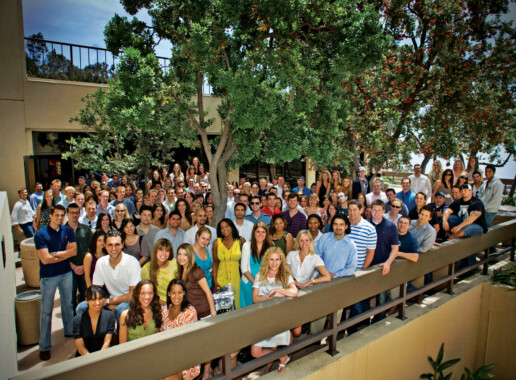Guest Post: A Glimpse Beyond the Numbers
 Louis M. Rocconi, Ph.D.
Louis M. Rocconi, Ph.D.
Assistant Professor, Educational Psychology and Counseling
The University of Tennessee, Knoxville
As a former LSSSE research analyst (2011-2016), I am excited to write a guest blog post for a project that means so much to me. In this blog post, I will discuss a recently published article in which my colleagues and I used LSSSE data to examine diverse interactions in law school. The full article is available in the Journal of Diversity in Higher Education. [1]
A concerted effort has been devoted to diversifying law schools. However, the focus has been almost exclusively on increasing the structural diversity of the student body (i.e., having representative numbers of a diverse population) rather than increasing the frequency and quality of interactions among students from diverse backgrounds. Research shows that meaningful interactions among students from diverse backgrounds foster many educational and psychological benefits such as reductions in prejudice, appreciation for others’ perspectives, improved critical thinking and self-confidence, greater connection to the institution, greater civic engagement, and enhancement of leadership skills. [2] Understanding how the student experience may foster diverse interactions in legal education will help law schools meet the needs of an increasingly diverse student population and society.
The concept of student engagement provides a useful
framework to explore how students’ activities and perceptions shape students’
contact with diverse others. Using data from the 2014 and 2015 administration
of LSSSE, we set out to investigate the types of activities and experiences in
law school that relate with more frequent diverse interactions. Diverse
interactions were operationalized using three items on LSSSE that asked
students how often they:
(1) had serious conversations with students of a
different race or ethnicity;
(2) had serious conversations with students who are
different from them in terms of their religious beliefs, political opinion, or
personal values; and
(3) included diverse perspectives (different races,
religions, sexual orientations, genders, political beliefs, etc.) in class
discussions or writing assignments.
We examined a number of student characteristics (e.g.,
gender, race-ethnicity, age, enrollment status), activities in law school
(e.g., interaction with faculty, higher-order learning, internship, pro bono
work, law journal, moot court, student organization), perceptions of the law
school environment and relationships with other students, as well as
characteristics of the law school (e.g., structural diversity, selectivity, public/private,
enrollment size).
Our findings (Table 1) were encouraging for law schools. Increased diverse interactions were not only related to structural diversity but to programmatic factors that law schools can influence such as creating a supportive law school environment or encouraging student-faculty interactions. Bringing about diverse interactions requires intentional and well-designed effort on the part of the institution. Fostering these various opportunities is one way in which law schools can encourage diverse interactions.

One of the strongest relationships involves
student-faculty interactions. Students who reported more frequent interactions
with faculty also reported greater diverse interactions. Law schools can exert
some influence over certain aspects of student-faculty interaction by implementing
policies that encourage student and faculty involvement both in and out of the
classroom (e.g., mentoring programs). Our findings also illustrate that diverse
interactions were related with students’ perceptions of a supportive law school
environment. Faculty and administrators can assist in creating a supportive
environment by providing students the academic and personal support they need
to be successful. We also found that creating opportunities for students to
interact with faculty and peers in collaborative ways, particularly pro bono
service and through student organizations, were related with increased diverse
interactions.
On the other hand, we found a negative relationship between participating in the law journal and diverse interactions. The lack of diversity among law journal staff could be one reason for this finding in addition to the competitive and insulated nature of law journals. This notion is consistent with the idea that competitive environments can discourage intergroup contact and minimize the benefits of diverse interactions.[3]
More research is needed to better understand the
particular ways in which interactions among diverse groups operate in law
school. Are law students who interact more frequently with a diverse set of
peers better able to apply what they have learned in class? Are these students
better prepared to work with a diverse set of clientele? Understanding diverse
interactions will help law schools meet the needs of an increasingly diverse
student body and better prepare students to meet the needs of the diverse array
of clients these future lawyers will represent.
Finally, I would like to acknowledge my co-authors without whom this research would not have been possible: Aaron Taylor, Heather Haeger, John Zilvinskis, and Chad Christensen.
_______
[1] Rocconi, L.M., Taylor, A.N., Haeger, H., Zilvinskis, J.D., & Christensen, C.R. (2019). Beyond the numbers: An examination of diverse interaction in law school. Journal of Diversity in Higher Education, 12(1), 27-37. http://dx.doi.org/10.1037/dhe0000080
[2] see for example: Bowman, N. A. (2011). Promoting participation in a diverse democracy: A meta-analysis of college diversity experiences and civic engagement. Review of Educational Research, 81, 29–68. Nelson Laird, T. F. (2005). College students’ experiences with diversity and their effects on academic self-confidence, social agency, and disposition toward critical thinking. Research in Higher Education, 46, 365– 387. Parker, E. T., III, & Pascarella, E. T. (2013). Effects of diversity experiences on socially responsible leadership over four years of college. Journal of Diversity in Higher Education, 6, 219–230. Pascarella, E. T., Martin, G. L., Hanson, J. M., Trolian, T. L., Gillig, B., & Blaich, C. (2014). Effects of diversity experiences on critical thinking skills over 4 years of college. Journal of College Student Development,55, 86–92.
[3] Pettigrew, T. F., Christ, O., Wagner, U., & Stellmacher, J. (2007). Direct and indirect intergroup contact effects on prejudice: A normative interpretation. International Journal of Intercultural Relations, 31, 411–425. Pettigrew, T. F., Tropp, L. R., Wagner, U., & Christ, O. (2011). Recent advances in intergroup contact theory. International Journal of Intercultural Relations, 35, 271–280.

